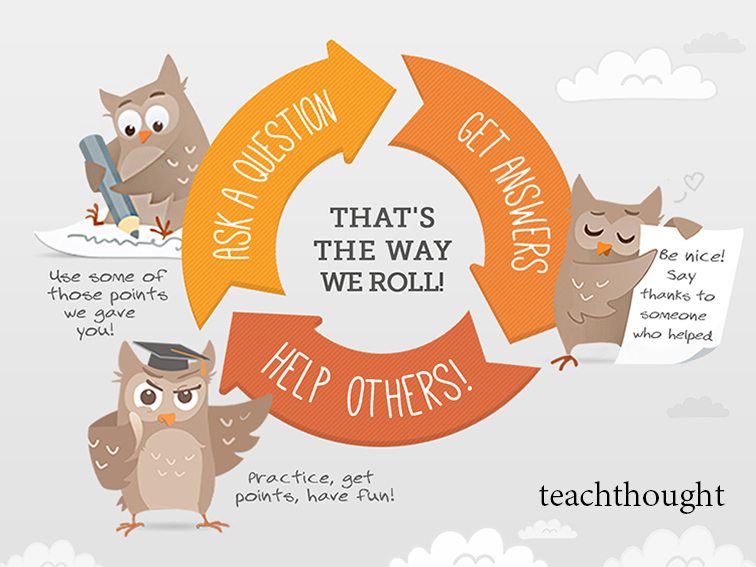
What Are The Significant Benefits Of Social Learning?
by Jakub Piwnik, brainly.com
Technology influences education. It’s a bit late to discuss how social media and technology may reshape learning and schools. The train has already departed and so we can observe some changes taking place. There are plenty of ways to go about it–social learning networks currently offer first class tickets to the “next-gen” learning.
What Makes Social Learning Social
The students have discovered the wonders of the Internet a long time ago. Teachers continue to fight against the copy/pasting from Wikipedia articles and literature from Sparknotes. On the other hand, students love video tutorials on YouTube which explain tough mathematical problems and keep in touch with their educators with the use of blogs. The conclusion, not particularly shocking, is that if there exists a problem, the solution can most likely be found online.
The challenge is to find a place which not only satisfies students’ most common needs, but also does it in a way ensuring the quality of the content found and the educational nature of the resource. students, teachers and all education enthusiasts and allows them to exchange knowledge and skills. Thanks to gamification available on many networks like the Khan Academy, students can enjoy studying and solving school problems as they gain ranks and compete with one another.
One powerful response is an active and engaged community–a crowd–which puts the “social” into social learning.
3 Significant Benefits Of Social Learning
1. Asynchronous Conversation: Questions & Answers
The new technologies allow to expand the course of learning in many ways. The process of acquiring knowledge and skills no longer needs to take place during the school hours and with the students sitting in a classroom. Social networks let it free students it from the limits of time and place. It’s natural that digital learning would bring new possibilities and methods of studying.
Even though the main functionality of desktop and mobile applications is searching for information to complete classwork, there are different–and smarter–ways it might be used. Obviously a large, if not the largest group of users spend their time asking others for resources, help with their problems, or solving difficult homework tasks. If something is unclear they engage in discussions with the ones who help in order to get the explanation, even if that conversation is asynchronous.
2. Confidence Through Collaboration
Many students simply enjoy helping their peers with their problems. Some of them spend their free time explaining difficult subjects to others and so it makes the process of learning quite fun. By tutoring others, users can acquire valuable skills and improve their self-esteem. Students are more likely to enjoy being taught by someone who is equal and does not look down on them.
An interesting thing happens when several users collaborate on a problem. Thanks to the community related functionalities available in many social media platforms, they may exchange comments freely and study in a group of friends given the proper framework and shared goals.
3. Crowdsourcing Content
Another talent of digital learning is the ability to browse through a list of questions filtered by subjects, grade level, source, or platform (e.g., The Khan Academy) or by topics, tone, or creator (e.g., YouTube channels).
Tagging and filtering can make the best resources visible and immediately accessible for the student–especially those students who may lack the research expertise, patience, or bandwidth to search like a professional. Further, some social learning networks are putting significant effort into ensuring the educational nature of the service and allows school related questions only, but this can reduce the overall impact of the platform.
Teachers, Do Your Homework
Considering the development of social apps and online tools, it was just a matter of time for the students to start using them for educational purposes. Although many of them are designed for very specific functionalities and sometimes offer limited or closed features, it is all up to the users–which usually means students–to set a destination and the means of getting there.
No matter our personal preferences teachers must either follow or lead to keep track of how the learning takes new shapes in a social age.
